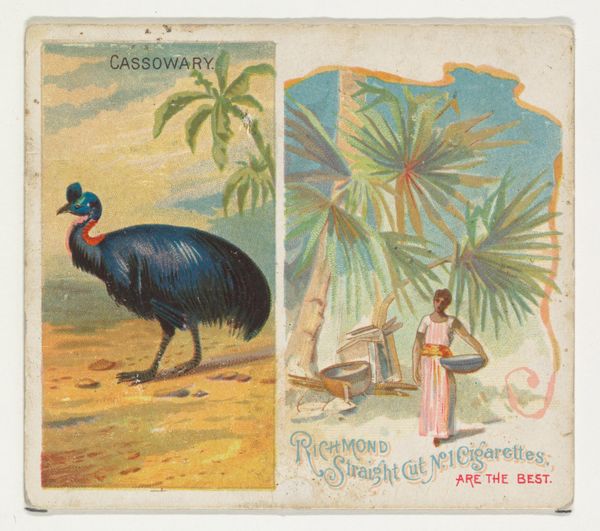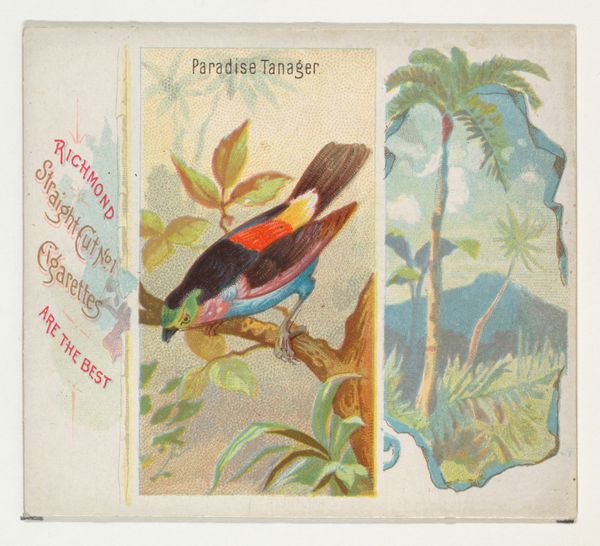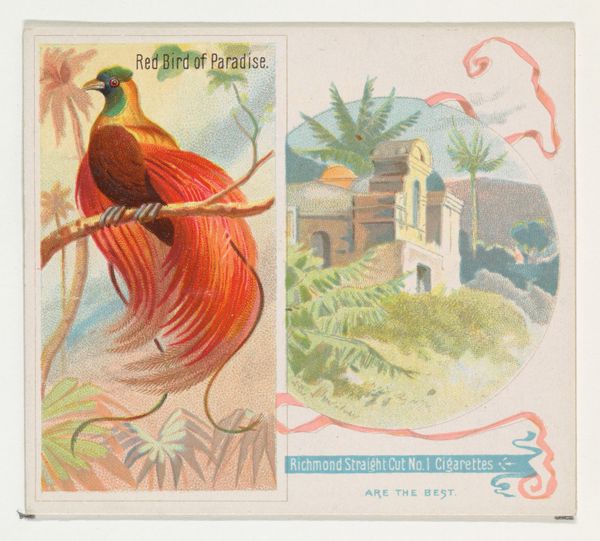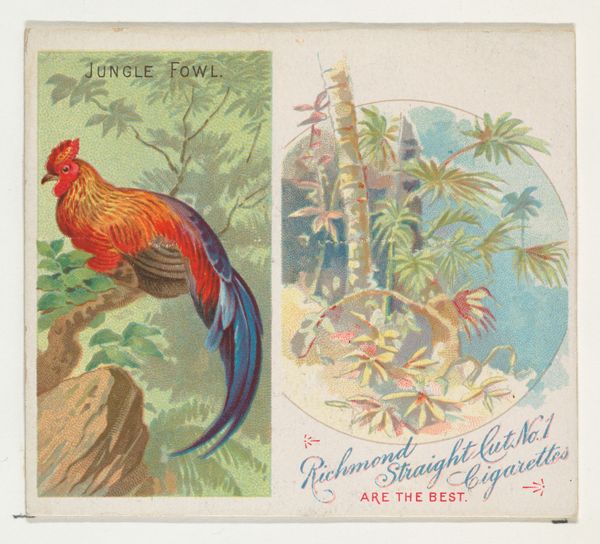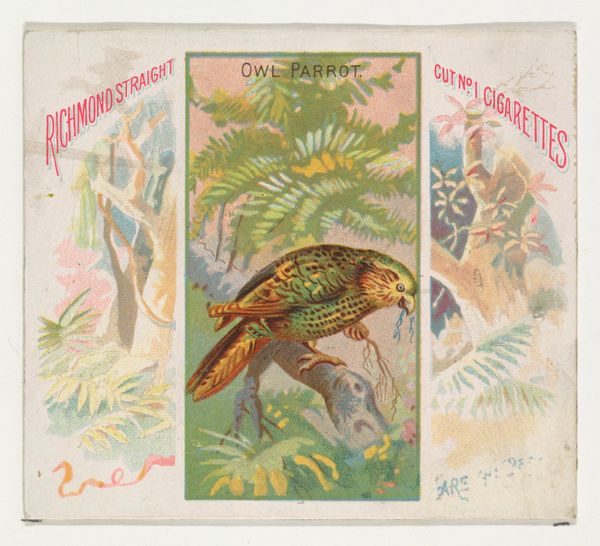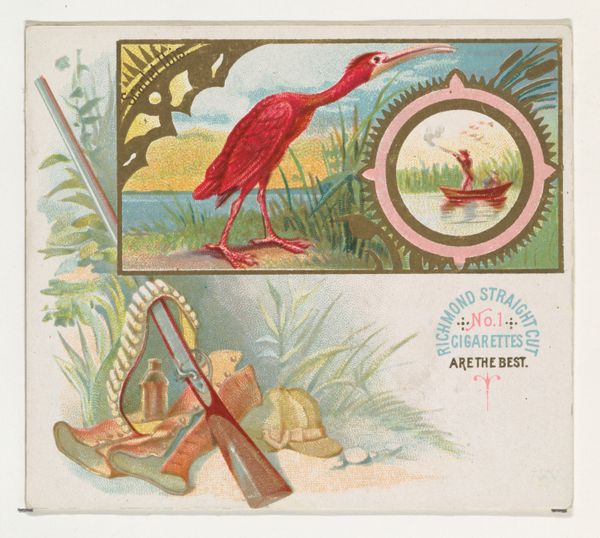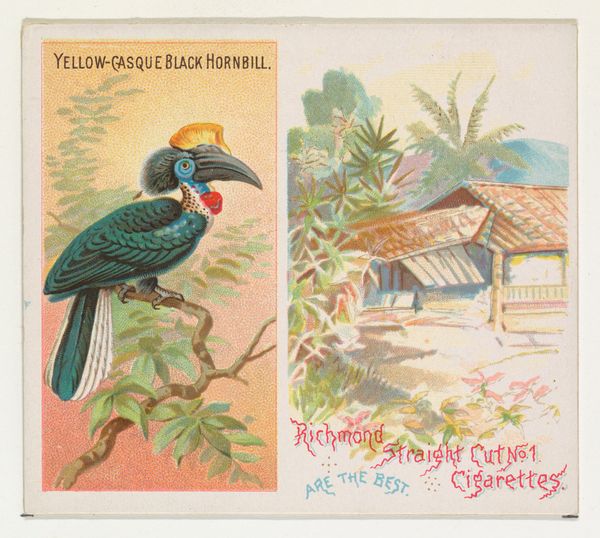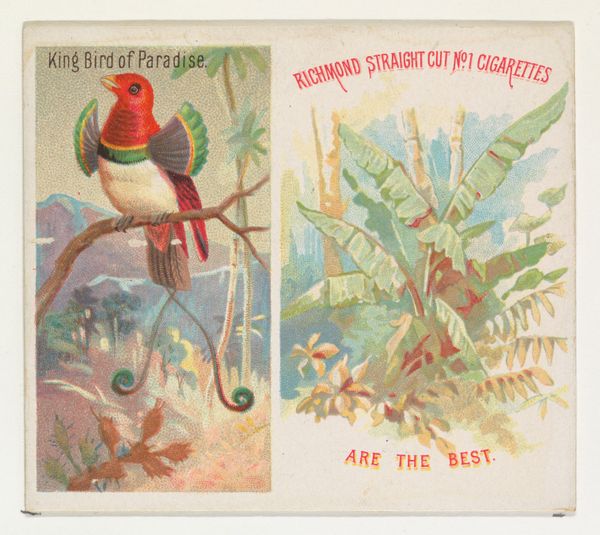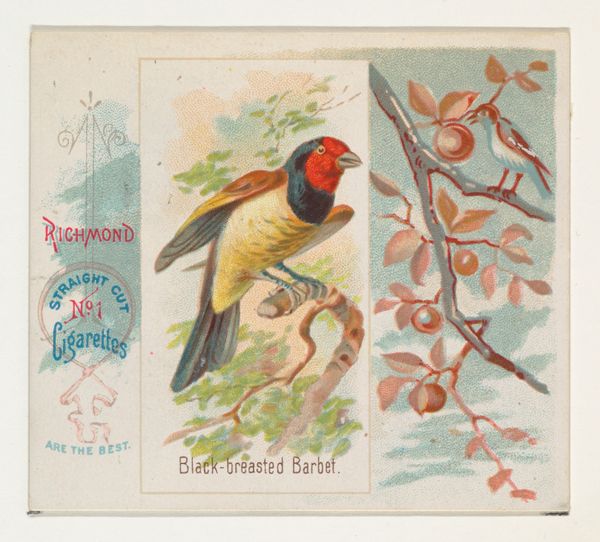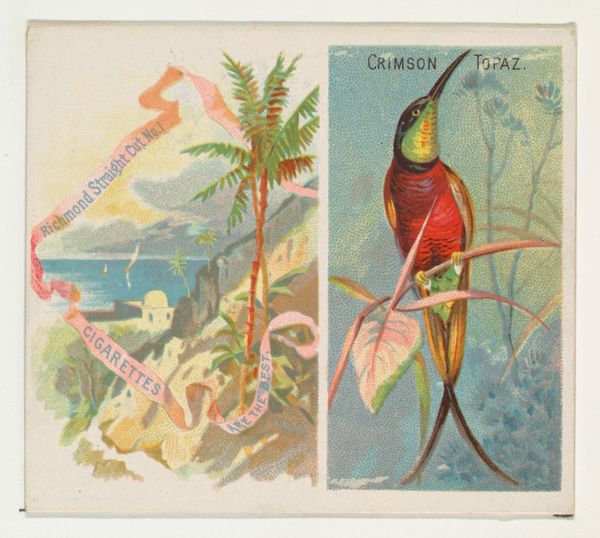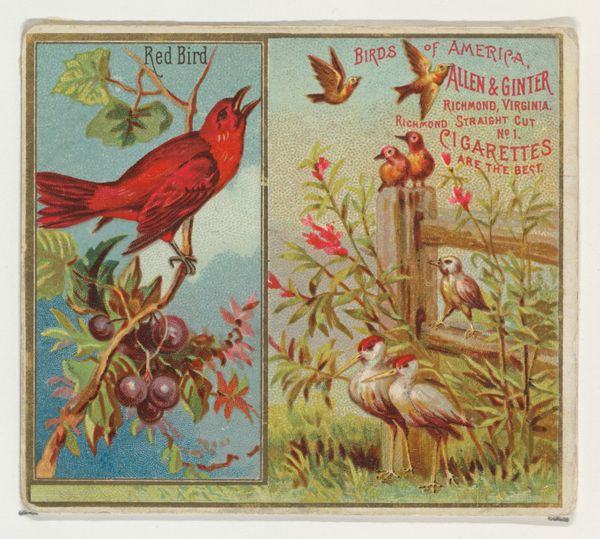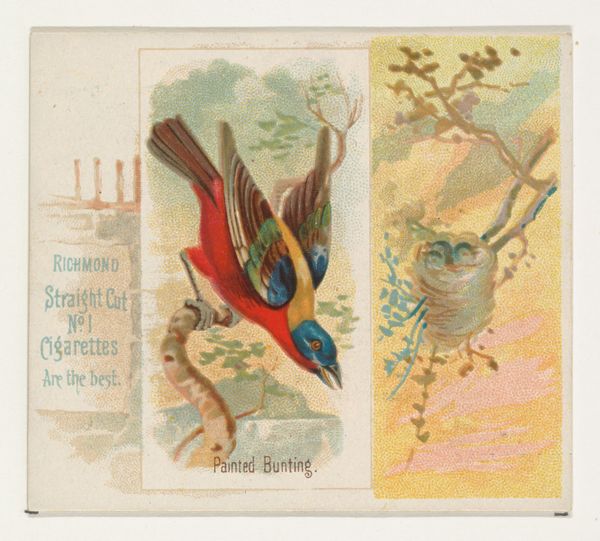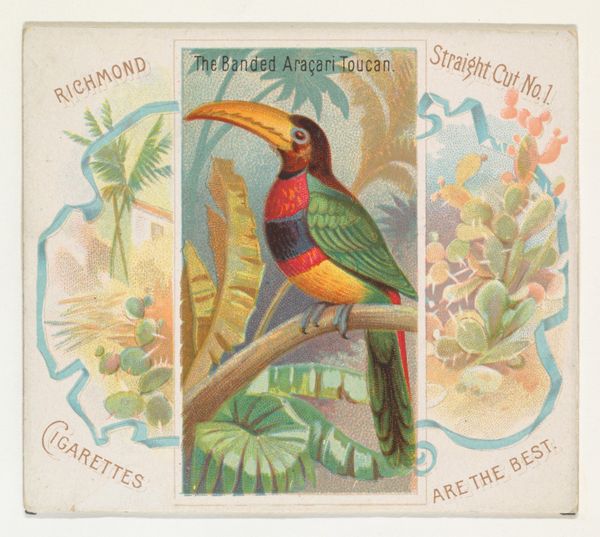
Concave-Casqued Hornbill, from Birds of the Tropics series (N38) for Allen & Ginter Cigarettes 1889
0:00
0:00
Dimensions: Sheet: 2 7/8 x 3 1/4 in. (7.3 x 8.3 cm)
Copyright: Public Domain
Editor: So, here we have "Concave-Casqued Hornbill" from 1889, a coloured-pencil drawing that was a promotional insert for Allen & Ginter Cigarettes. I'm really struck by the almost flattened perspective – it feels like a stage set. What stands out to you about this piece? Curator: Immediately, I'm drawn to its function as a commercial object. Think about the production. These cards weren’t just art; they were mass-produced, handled by workers, and inserted into cigarette packs. How does the accessibility and consumption of tobacco complicate the aesthetic value we might place on this image today? Editor: That's a really interesting point. I hadn't considered the labor involved. Curator: Exactly! The printmaking process itself, the colored pencil application, were all industrial. Consider, too, the social context: these images exoticized and commodified the "tropics," promoting a colonial fantasy. The female figure included along with the bird serves the commercial intention to highlight the supposed allure of faraway places through cigarette marketing. Who benefitted from its circulation, and at what cost? Editor: So you're saying the image, beyond just being pretty, played a part in promoting certain ideas, maybe even harmful ones, connected to commerce. Curator: Precisely. And it makes you question where art stops and consumerism begins, or if they were ever truly separate to begin with. How much of our view of the tropics even today, might be skewed by marketing materials like these that equated distant places with an escape, or relaxation, all in pursuit of financial gains. Editor: I see what you mean. It definitely gives me a lot to think about regarding how images can both reflect and shape our understanding of the world. Curator: Indeed. Considering the materials and their historical context helps us deconstruct the surface appeal and unearth the complex web of production, labor, and power at play.
Comments
No comments
Be the first to comment and join the conversation on the ultimate creative platform.
